Aušra Petroškienė, leather and metal accessories, Philadelphia Museum of Art Craft Show
Philadelphia Museum of Art Craft Show at Pennsylvania Convention Center (PHL) through November 10th
Aušra Petroškienė greeted me with a warm smile and an apology about her English. I told her not to worry because in Philly we speak our brand of English, youse guys! I was drawn to her striking body accessories, she told me they were not exactly jewelry but statement pieces, especially the belts which were worn best posing at parties. The leather and metal are formed into sculptural shapes that wrap around the waist, wrist or neck are thoroughly modern as was her display. The hard edhe jewelry was displayed on lowly corrugated cardboard which gave them a distinct punk attitude. Aušra Petroškienė in addition to being a contemporary jewelry designer she is a curator and gallery director in Vilnius, Lithuania. Since 2009 she has been curating public art exhibits including a railway station.
“The idea of this jewelry is from ancient Lithuanian metal works and the construction was different. I took the concept and transformed it to now days. It’s ancient and future. The pieces are belts and necklaces that are decorated but like for battle. But I transformed in from the concept of that, the construction is leather and metal, metal is covered with leather and then the metal is decorated.”
Sandra Malaskeviciute, Spindi Jewellery, Philadelphia Museum of Art Craft Show
“Spindi Jewellery is her trademark. Plexiglas and rich metals are used exclusively to create pieces of precise clean lines and geometric forms. Refined, hand-polished, or transparent surfaces replace jewels and let the beauty of the forms themselves shine through. Spindi Jewellery collections are full of new forms and authors’ explorations, from the Tulip Brooches and pixel building blocks, to the op-art collection and the Spectrum Series.” – PMA Craft Show website
Sandra Malaskeviciute attended the Academy of Art in Vilnius, Lithuania, her art is wearable and also objet d’art, The necklace above has seeds and flowers embedded in the glass that are native to Lithuania, a sweet reminder of home and the culture of the Balkan country. The glass and silver jewelry harkens to nature in many ways with rainbow bright colors, embedded seeds, floral and vegetable motifs.
Laura Dailidėnienė, Daili Designs Philadelphia Museum of Art Craft Show
Laura Dailidėnienė‘s jewelry incorporates natural elements into her fashion jewelry with frozen flowers embedded in glass, even a tiny mushroom make a charming charm. She laughed that even if it was poisonous it’s encased in glass.
“Laura Dailidėnienė is one of the young generation costume designers. She is a graduate of Vilnius Academy of Arts, and has been participating in various fashion events since 1998. She continuously designs and presents her fashion collections and organises exhibitions. A very important feature of the design of Laura Dailidėnienė is a clear and purified concept conveyed by her costumes. The conceptuality of her design eventually becomes more important than global fashion trends or an attractive emphasis on the body, character or mood. First, the concept is purified, and this becomes the point of reference for selecting fabrics, the form of the silhouette, the lines of the clothing, and the accessories, which designer creates herself from glass. And this is imposing. Thus, coherent collections of the clear concept and stylistics are born, which can be treated either as individual models or as an aggregate communicating a certain concept.” – Daili Design website
Laura’s partner Viktoras Dailidėnas creates glass art as well.
Viktoras Dailidėnas, Daili Designs Philadelphia Museum of Art Craft Show
The piece above is actually layers of toned glass, panels can be removed at will to create an ever-changing artwork.
“I am a glass artist, mostly I work with very different techniques. I like that my works have a little bit of concept, every time I hope that it’s not just decorative but it’s something that is mine – I don’t know how to say this. I live and work in Vilnius, sometimes I go to work with hot glass at other studios but mostly at Daili Design, our home. The little boxes made from trees are for rings.”
There is an assortment of intriguing boxes made from tree branches with twigs as handles, the hollowed wood is just large enough to hold a ring or two and retains the sweet smell of the wood, a lovely sense element that will never go out of style.
Lina Auste, Glass Artist, Philadelphia Museum of Art Craft Show
Lina Auste, Glass Artist, Philadelphia Museum of Art Craft Show
“I use various kiln forming techniques in creating my pieces. I create glass jewelry, cast and fused glass sculptural works, as well as decorative installations for specific interiors. I am fascinated and inspired by the structures, shapes, and patterns of nature.” – PMA Craft Show website. DoN did not get to interview Lina Auste because she was too busy with customers, her delightful glass hanging lamps, fruit bowls and wall art are inspiring and beautiful. Traditional and post-modern designs are harmoniously displayed together offering a design sophistication that is fun and functional.
Nomeda Marčėnaitė, Philadelphia Museum of Art Craft Show
“Writing books, hosting TV-shows, cooking, gardening, car racing, and playing with clay are all activities that give my life delight and color, but only ceramics are a profession for me. I know no other art form that would incorporate line, color, form, and texture. I play with all these options like a child, and it seems that my whole life will not be enough to exhaust this joy.” – PMA Craft Show website
Along with several large sculpture, Nomeda is presenting lovely small ceramic objects. I asked if this was her first visit to Philadelphia?
“Oh yes! I am here the first time in my life in America! We have been here only two days and the difference in time is seven hours. So in Lithuania it’s deep, deep night. Nearly morning!
I asked about how she got started in the arts?
“I started when I was eleven years old and later I joined the Arts Academy at the University of Vilnius, in Lithuania, where I studied ceramics. After that, I worked a lot on TV, I had my show for more than ten years, But this is my love, ceramics is my love. I don’t get to work everyday, usually I find some time, say one week, and I spend all my time because I have three children so I when I’m at home they are always asking, ‘Mama! Can you bring me this? Can you take me there?Or make me soup?’ And, of course, I’m like, ‘Yes! Of course, I can, I can, I can.’ Even when I go to other cities I have workshops there so I’m always working and working and working. I love it.”
Tell me about your TV show?
“It’s about art (on her computer one of the episodes was playing and it happened to be interviews with two of the Craft Show award winners) – it’s awesome! Occasionally it happens. I did a show today, we went to the hotel and we did it over the internet. Then we came here and I saw that they are here and you know,’They are here!’ It’s nice. I work with a lot of different things, like we work with groups that help children that have no parents, orphanages. So seven years we collected millions in money for them because it was on the TV in our country. It’s very important, very interesting and it’s serious.”
We have similar problems here with homelessness and poverty.
“Yeah? Really? It’s strange, it’s such a rich country. What to do? What to do? So I work a lot with that.”
Why is it that the artists pick up the ball on these issues?
“It’s interesting because life is once. And you didn’t choose it, so you have two possibilities – to live for the fun or to live for it, I think artists understand that it’s fun, it’s a nice experience to try to help.”
You can find her TV show at her website http://www.nomedos.lt/
Baltos Kandys, Philadelphia Museum of Art Craft Show
Baltos Kandys, Philadelphia Museum of Art Craft Show
“Baltos Kandys is an artistic group comprised of six textile artists who have been working together since 1998. The name of the group, White Moths, refers to the tool the artists have chosen for their expression – wool that is felted, formed, and dyed by hand which attracts them no less than it does real moths. Like white counterparts to the wool-nibbling moths, the artists use wool to make flat rugs, pictures, decorative felt bas-reliefs, lamps, shawls, scarves, and accessories.” – PMA Craft Show website
Baltos Kandys was included in the LTextile show at the Philadelphia Art Alliance earlier this year which I reported on for DoNArTNeWs.
Ruta Sipalyte, Ceramic Art and Design, Philadelphia Museum of Art Craft Show
Ruta Sipalyte, Ceramic Art and Design, Philadelphia Museum of Art Craft Show
“My grandparent’s brothers and sisters lived in the United States and most of them lived in Philadelphia but they passed away a long time ago. So my Mom’s cousins passed about five years ago and now the youngest generation doesn’t keep in touch. But one cousin is still here and she’s coming, she’s an architect, Emily McGovern. I don’t know the art scene in Philadelphia that well, so it’s difficult to compare but I can say that the craft show is really big and a nice show. And at home for applied craft shows we don’t have such big exhibits. We have a very famous fine arts show in Vilnius every second year. If people want to show their work in places like this (the PMA Craft Show) they have to show in Holland, France and Germany but in Lithuania we have a very famous street festival in the Spring time, the Saint Casimer street fair, a street market. Craft people from all over Lithuania, even Latvia and Belarussia will come over and sell works in the street. And now we also have in the Fall, at the beginning of September, galleries and professional artists go out into the main avenue in the center of Vilnius and show their work to sell.
I teach in the Art Academy, I teach ceramics, and we also have two very unique outdoor galleries that are glass cubes for ceramics art. They have two places in Old Town next to the center, a bit out of Old Town, but it’s near the center, and you can see the work 24 hours a day because it’s in a glass cube. And we also have some small galleries for ceramics.” – Ruta Sipalyte
Danius Strazdas, Ceramics, Philadelphia Museum of Art Craft Show
“Lately, I have been experimenting with the leaven ceramics technique, popular in Vilnius in the Middle Ages. This technology is different because the fully heated vessel is immersed in specially prepared leaven while it is still steaming. The leaven may be made of wheat, rye, pea flour or oatmeal, or of beet or cabbage juice. This technology is eco-friendly and chemical-free. Items made using it will never be identical. The patterns on them, like frost on a window, are always unique.” – PMA Craft Show website
Danius Strazdas, Ceramics, Philadelphia Museum of Art Craft Show
“This is called leaven pottery, we take it out from the kiln when it’s very hot and put into some special liquid. Most of them that you see here are dipped in beetle juice.”
I joked that you can’t say beetle juice three times. Danius didn’t get the joke. My bad.
“Some of them look like they are wooden. We have a kiln and we practice this technology which we reconstructed in 1999. Because it was already forgotten but not for a long time, about thirty years. And when we reconstructed we met some people who knew about it. This is old technology, an old tradition but you know old masters go away but I know family members and I asked them and we gained some knowledge. You know? This techniques main purpose was to make cooking pots.”
The finished pots can sit right in a fireplace to cook food. The clay has crushed granite added to local clay that they dig up themselves or outsource.
“Most of my life I have dedicated to reconstruction and revival of various pottery techniques. I believe that traditional, historical, and ethnic technologies often do keep hidden treasures, though undeservedly forgotten. Nevertheless, restored, they valuably contribute to new practical and artistic purposes. Lately I have been experimenting with a leaven pottery technique, which had been popular in medieval Vilnius. This technique is unusual as the fully heated vessel is immersed into a particular leaven. Leaven may be made of wheat, rye, and pea flour, oatmeal, beetroot juice, or cabbage juice. The technique is organic and eco-friendly. Items, made by applying this technique, will never be the same – one always gets unique patterns, like those of frost on a windowpane. Dark streaks and spots on the surface of the vessel can allude to mineral jasper, the patterns of Damascus steal, the sea, either storming or tranquil, or to our dreamy clouds. Our forefathers had used leaven ceramics for food. However, above all, the leaven pottery does offer mostly unlimited opportunities for creative improvisation.” – Dainius Strazdas website
Indra Dovydėnaitė, knitting fashion designer, Philadelphia Museum of Art Craft Show
“My specialty is handmade jersey. I use ancient pattern traditions in combination with a modern silhouette. A garment can be transformed into a different shape and have a different look. The creation of a complete legend is based on searching for inspiration in art, nature, and history. A cozy and practical garment appears when natural fibers are applied: merino wool, mohair, cotton, linen, and silk. At the heart of my work is the woman and her image as an independent, elegant, and refined individual.” – PMA Craft Show website
Indra Dovydėnaitė, knitting fashion desugner, Philadelphia Museum of Art Craft Show
Indra Dovydėnaitė explained to DoN that all of her fantastic fashions are hand made by herself. She said she didn’t take a Summer vacation this year and focussed on creating her stunning works of art that you can wear by crocheting and knitting. I can tell you that her booth was crowded with fashionable women who were fascinated by the unique designs, extraordinary quality and stylish fabrication.
Indra Marchinkevicne, furniture and interior design, Philadelphia Museum of Art Craft Show
“Furniture designer Indra creates passionate furniture. Once you see her furniture, you will want to come back to it like coming home, to a place where love and peace reign. The theme of love and peace is chosen because it symbolizes a rejection of greyness, apathy, and mass production. This furniture is close to art: the elegant fantasy of Dalí, the depths of colours of Matisse, the rationality of Picasso.” – PMA Craft Show website
“Interior design is my passion. You can see that it’s very colorful and the main idea comes from Hippies. Why Hippies? Because they are very free and they believe in Peace and Love. I decided to use thus subject because those people were very brave in their hearts. They’re not afraid to be different, they’re not afraid to look different, they’re not afraid to smile and they want to share in their lives. And I think that the color has a very good possibility to make people happier, because we have a lot of negative things in our lives and we have to refuse it.” – Indra Marchinkevicne
The chairs with the egg shaped beaded backs are super comfortable, the abacus chairs offer a meditative motif to keep your hands busy and the bright color is fun and functional. The use of symbols is universal and touching in that all we need is Love and Peace in the world.
Klaidas Navickas, cut paper, Philadelphia Museum of Art Craft Show
“Following the traditional Lithuanian paper cutting tradition, he developed his own technique and style. Every paper cutting Klaidas makes, tells us different stories – Lithuanian folk songs and tales, proverbs, jokes and daily life situations. To enjoy these stories, you have to take a closer look at each piece of paper cutting. Each paper cutting is made from a single piece of paper.” – PMA Craft Show website
Klaidas Navickas, cut paper, Philadelphia Museum of Art Craft Show
Lithuanian paper cutting is all done by hand with a pair of scissors and an X-acto knife. I asked Klaidas about the technology and his inspiration. He insisted his English was bad, I told him mine wasn’t so great either since I’m from New Jersey. But the images relate to songs about men drinking, the young boys and girls playing, a song for going to battle, army songs… and he began to sing a Lithuanian soldier’s song at the top of his lungs! The pictures tell stories of hunters, fishermen, farmers and traditional Lithuanian life. Lithuanian paper cutting is an old tradition that survived the occupation of the Soviet Union, Klaidas Navickas told me he learned it from his Grandma.
Danguolė Brogienė, fiber art, Philadelphia Museum of Art Craft Show
“My textile pieces are created by using the original technique of silk weaving on a flat surface while searching for the third dimension. These decorative compositions have a special vibration of a shining silk thread and are characterized by a precise modeling and harmony of color tones. The compositions look different depending on the angle of viewing, daylight or artificial light, this way a dynamic effect is created. A subtle vibration of thin silk fiber in the light creates improvised abstract forms reminiscent of the Lithuanian folk textile ornaments.” – PMA Craft Show website
Danguolė Brogienė‘s silk thread assemblages reflect the light in a way that ca not be captured in pictures. The artist picked up one of the large square panels and rotated it for me and the light refracted and glowed like a prism. Since she speaks only Lithuanian and French our conversation was subtle, her son came over from London to help her with translation , but he was busy making sales of the desirable necklaces with woven silk. The two of us were able to communicate through her art and she showed me pieces she had stashed away behind the curtains that were in hues of gold and silver. She creates the works in pairs, diptychs, with complementary color ways and she was clear when she insisted she shies away from drab color. Some of the threads are literally hundreds of fibers spun into unique hues. The squares of woven silk read from across the room like an abstract painting but up close reveal the handwork and intensity required to create the illusion.
Dalia Marija Saulauskaite, leather wear and wall designs, Philadelphia Museum of Art Craft Show
“I work with natural leather in leather design. I am doing functional objects but most of all three dimensional or big wall pieces using six to eight parts. Wall plates of leather for interiors. But sometimes I work with just conceptual projects, for two years I’ve been playing with one coin, the most little money in Lithuania called centai, balti centai, I made a big exhibition where the idea of one life, one Lithuania, one World with two different sides, one white, one black, the positive/negative. With this object I mimic days, nights, years, centuries – existence is problematic because a lot of it is in this little thing, history and time. And it’s strange but after one year (from now) we will not have these Lithuanian money, so it will be history. It will be history.” – Dalia Marija Saulauskaite
Dalia also makes fabulous leather jewelry mostly for women, but, she did have a leather color that snapped in the back with a leather bow-tie on the front that is now on my wish list.
Thank you so much to Honorary Consul to Lithuania of Philadelphia, Krista Bard, for offering me the opportunity to meet the artists visiting from Lithuania. This premier show and sale of contemporary craft includes 195 of the finest and most dynamic craft artists in the United States, selected from more than 1,000 applicants. Plus the visiting artists from Lithuania. It was very humbling to learn of their excitement to be in Philadelphia and their plans to visit tourist hot spots like New York City, Las Vegas and the Grand Canyon when the show is over. I didn’t get to interview all of the artists but I hope some day in the future I can travel to Vilnius and experience the art world of Lithuania first hand.
Learn more about Lithuania Festival 2013 on DoNArTNeWs and http://lithuanianfestival.com/.
Written and photographed by DoN Brewer except where noted.
Follow the original DoNArTNeWs Philadelphia Art News Blog at www.brewermultimedia.com
Like DoNArTNeWs Philadelphia Art News Blog on facebook
Follow DoN on Twitter @DoNNieBeat58
DoNArTNeWS on Tumblr
@donniebeat on Instagram
Affiliate Marketing Disclosure Statement
Donate via safe and secure PayPal in the sidebar to help defray the costs of producing this blog post.











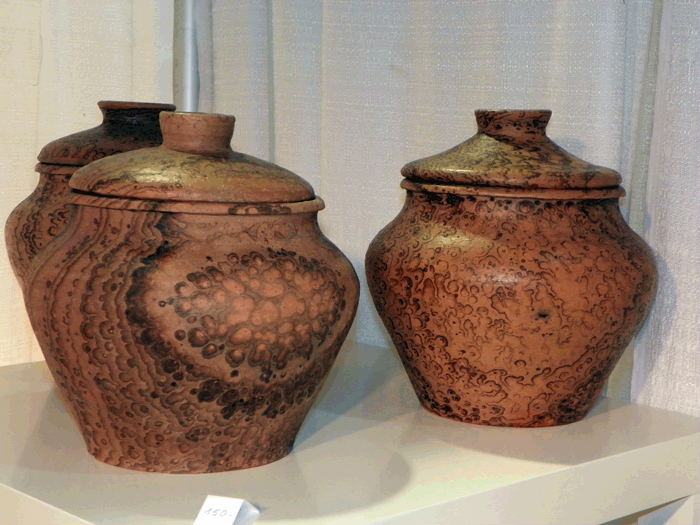

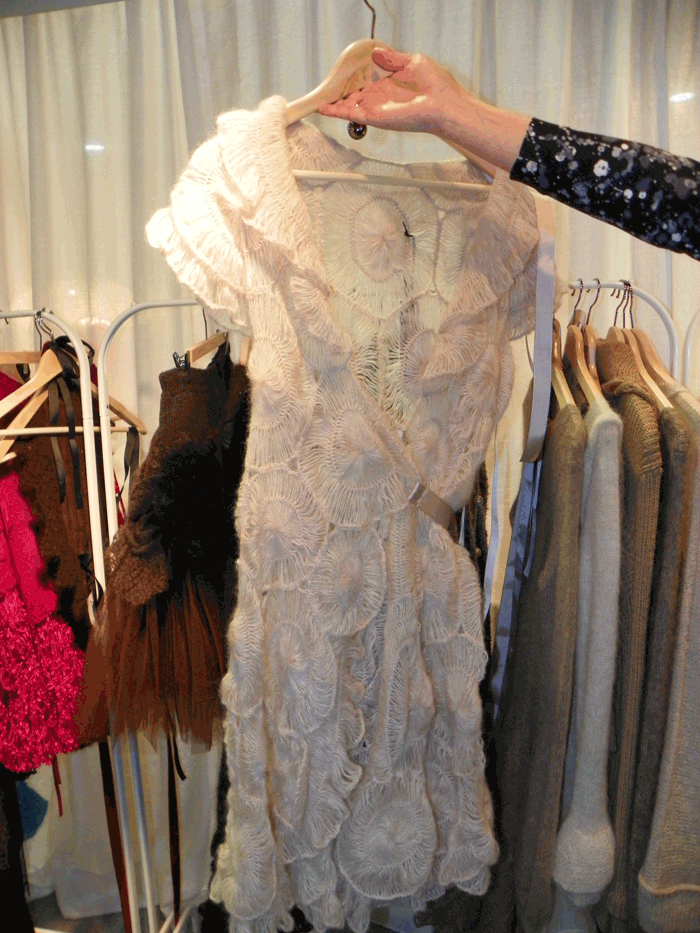
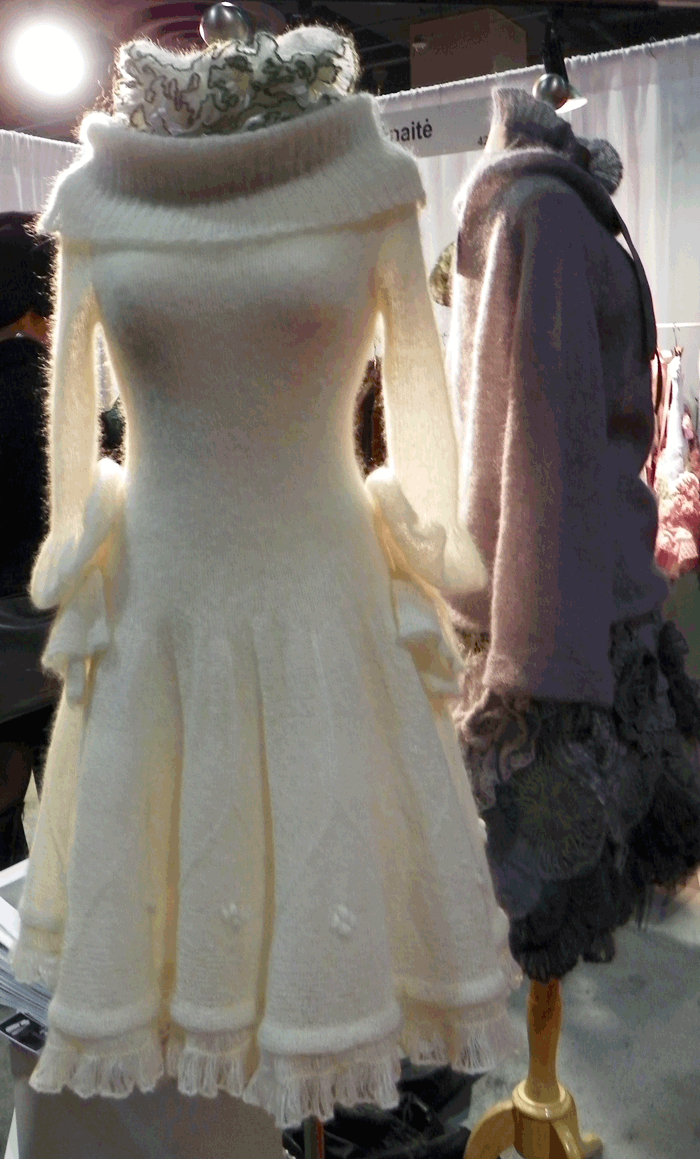

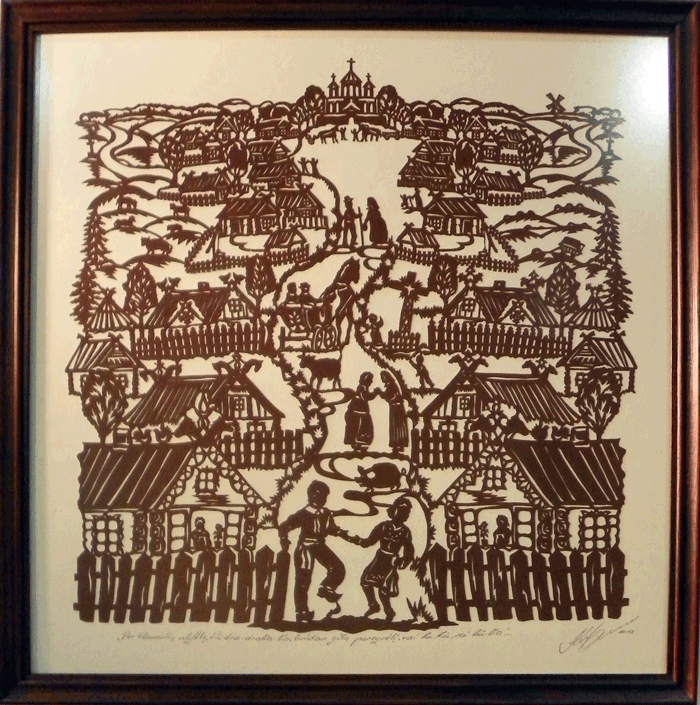

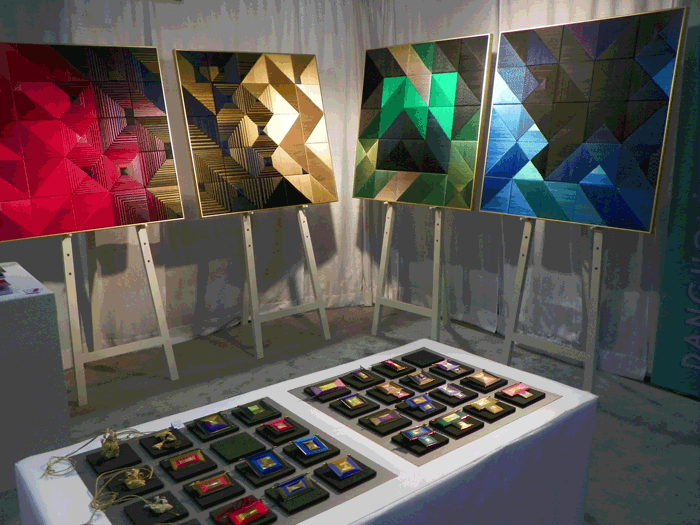




{ 2 comments… read them below or add one }
A big bold blog! Filled with as many types of contemporary arts and crafts as one could find. I know DoN’s favorite was the leather and metal piece he starts with! Yes statement pieces for sure.
Than we are treated to an array of object lovingly hand crafted and offered as works of art.
My favorite is the ceramic pieces by Ruta Sipalyte: Fun Creative and useful.
Returning to this blog will offer you many wonderful vision of art of Lithuanian Crafts.
Dear,
I would like to ask a permission to republish your post on LTUworld.com. This non-commercial website collects information about Lithuanian activities around the world. Pleas take a look at it (www.LTUworld.com). If you have any questions, don;t hesitate to contact me.
Best,
Deimante
You must log in to post a comment.